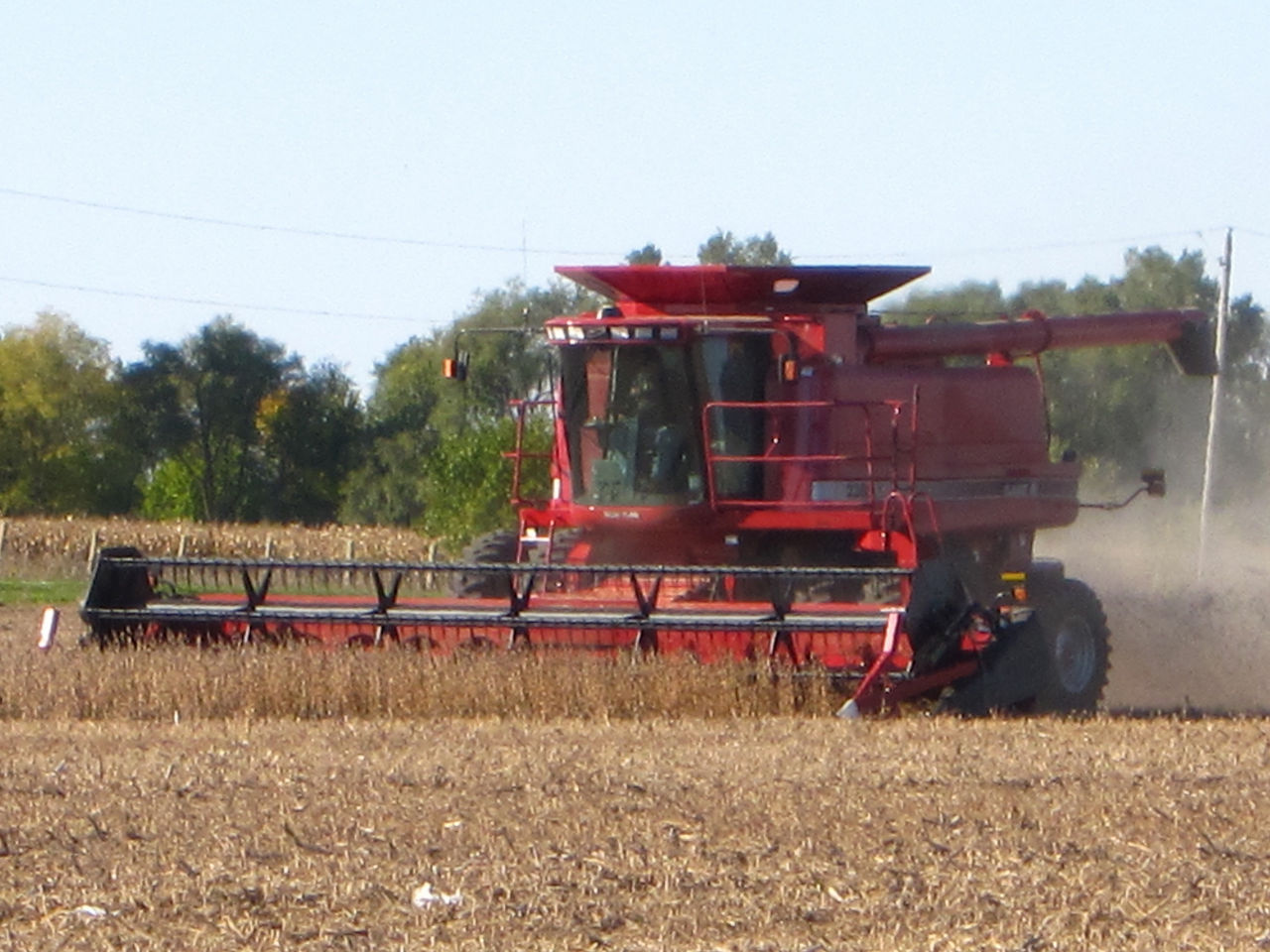5 MIN READ
Value of Harvest Plan for Disease-Affected Soybean Fields
September 5, 2023

Late-season soybean diseases can cause harvest-timing issues. Additionally, the residue from infected crops (Figure 2) must be managed to help reduce the potential for the disease to affect the following soybean crop. Yield losses from late-season diseases can vary depending on the time of symptom onset, number of plants infected, severity of disease, and environmental conditions from mid-season to harvest. Soybean diseases are primarily spread by soil movement, wind, water splashing from rain or overhead irrigation, insects, and infested residue.

Do I need to scout fields for late-season soybean diseases when planning for harvest?
Scouting can help determine what diseases are present and how widespread they are. Start scouting about mid-season and continue until maturity. Some of the key diseases that should be scouted for late in the season include:
- Bacterial blight
- Brown stem rot
- Charcoal rot
- Frogeye
- Phytophthora root rot
- Phomopsis pod and stem blight
- Cercospora leaf spot/purple seed stain
- Stem canker
- Sudden death syndrome
- White mold (Sclerotinia stem rot)
After a soybean disease has been identified, management decisions can be made that may help minimize the disease’s potential impact on the current yield and that reduce the infection of future crops. Diseases caused by fungal pathogens may be controlled by a properly timed fungicide application. Determine if a disease might lead to standability issues that could result in yield loss and quality loss to help decide if a diseased field should be harvested early.
For example, if a disease that can overwinter on plant residue is affecting only one of your fields, harvesting that field last may help to reduce the spread of inoculum by leaving the diseased plants undisturbed until the other plants have been harvested. Similarly, if just a portion of a field is severely infected, it may be wise to harvest that area last. This choice can help prevent contamination of the combine, which would in turn reduce the spread of inoculum throughout the rest of the field and lower the possibility of spreading the disease to unaffected areas.
Can fall tillage help reduce the impact of disease in the future?
Fall tillage can be effective at reducing the risk of future soybean infections by many foliar and stem diseases that survive on crop residue. Incorporating infested crop residue into the soil can increase the decomposition rate of the residue, reducing the population of fungi available to infect future soybean crops. Diseases that can be controlled with fall tillage include: Cercospora leaf spot, purple seed stain, frogeye leaf spot, bacterial blight, brown stem rot (BSR), and Phomopsis pod and stem blight. Fall tillage can also reduce disease outbreaks from sudden death syndrome (SDS) and Phytophthora root rot (PRR) by helping to dry seedbeds and increase soil temperatures for the following spring.1 However, soil moisture and erosion issues should also be taken into consideration when deciding whether to perform fall tillage.2
Which soybean diseases are not controlled by tillage?
Soybean damping off and root rot diseases in which the pathogen is soilborne—for example, Rhizoctonia, Pythium or Fusarium—and soybean cyst nematode (SCN) are not controlled well by fall tillage. For soilborne diseases, the use of seed treatments can help manage some of these diseases. In the case of SCN, tillage can move the cysts and increase the risk of spreading them to other parts of a field, or to other fields.1
Tillage for Sclerotinia stem rot, also known as white mold (WM), has had varying levels of effectiveness. The use of strip-till, no-till, or any system that leaves the infected residue on the surface is preferred. When the soybean residue is left on the surface and corn or wheat is then planted the next season, the overwintering sclerotia germinate during the non-host corn or wheat cycle, reducing the risk for the next crop of soybeans.1 Reduction of pathogen populations and selection of soybean products with good resistance ratings for WM are also key management strategies for reducing the impact of this disease.
What other management practices can help minimize future soybean disease infections?
Crop rotation for one year with a grass crop such as corn or wheat is generally effective in reducing inoculum available to infect the following soybean crop. Infected leaves or pods typically decompose during the next growing season, even when left on the soil surface. However, soybean stem residue can persist for possibly the next two growing seasons. As a result, some plant pathologists recommend that, in some cases of diseases that infect soybean stems, a two-year rotation away from soybeans may be helpful. These diseases include BSR, charcoal rot, SDS, and WM. If a BSR infection is severe, a third year without planting soybean in that field may be helpful.2
Planting practices can have some impact on disease severity. Early planting is not recommended in fields that have a history of sudden death syndrome. Row spacing of 30 inches or greater can reduce the likelihood of a white mold infection. Also, growers should be careful when selecting cover crop species for fields with a history of white mold, as some cover crops are known to be host plants to the white mold pathogen.2
SOURCES:
1Yang, XB. 2008. Fall tillage considerations for soybean disease management. Iowa State University Extension and Outreach. Integrated Crop Management. https://crops.extension.iastate.edu/cropnews/2008/10/fall-tillage-considerations-soybean-disease-management
22020. Disease management in soybean. University of Nebraska-Lincoln. CropWatch. https://cropwatch.unl.edu/plantdisease/soybean
Web sources verified 8-18-2023 1311_149683